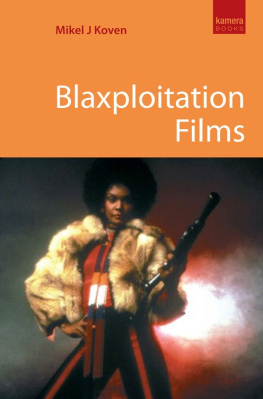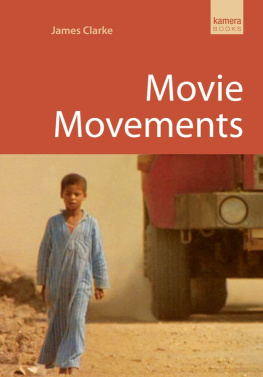La Dolce Morte
Vernacular Cinema and the
Italian Giallo Film
Mikel J. Koven

SCARECROW PRESS, INC.
Published in the United States of America
by Scarecrow Press, Inc.
A wholly owned subsidiary of
The Rowman & Littlefield Publishing Group, Inc.
4501 Forbes Boulevard, Suite 200, Lanham, Maryland 20706
www.scarecrowpress.com
PO Box 317
Oxford
OX2 9RU, UK
Copyright 2006 by Mikel J. Koven
All rights reserved . No part of this publication may be reproduced, stored in a retrieval system, or transmitted in any form or by any means, electronic, mechanical, photocopying, recording, or otherwise, without the prior permission of the publisher.
British Library Cataloguing in Publication Information Available
Library of Congress Cataloging-in-Publication Data
Koven, Mikel J.
La dolce morte : vernacular cinema and the Italian giallo film / Mikel J. Koven.
p. cm.
Includes bibliographical references and index.
ISBN-13: 978-0-8108-5870-1 (pbk. : alk. paper)
ISBN-10: 0-8108-5870-3 (pbk. : alk. paper)
1. Detective and mystery filmsItalyHistory and criticism. 2. Horror filmsItalyHistory and criticism. I. Title.
PN1995.9.D4K68 2006
791.43'6556dc22
2006015624
 The paper used in this publication meets the minimum requirements of American National Standard for Information SciencesPermanence of Paper for Printed Library Materials, ANSI/NISO Z39.48-1992.
The paper used in this publication meets the minimum requirements of American National Standard for Information SciencesPermanence of Paper for Printed Library Materials, ANSI/NISO Z39.48-1992.
Manufactured in the United States of America.

Contents

Preface
This book has three aims. The first, obviously, is an exploration of the giallo , albeit from a synchronic, rather than diachronic, perspective, with particular attention to some of the thematic concerns that arise from a textual study of these films. This book is categorically not a review of the films, debating whether or not they are good or bad; nor does it fall into the cult of the auteur, helping to establish a pantheon of rediscovered Italian horror cinema artistes, putting Lucio Fulci, Sergio Martino, and Aldo Lado into the same revered echelons as Dario Argento and Mario Bava.
Second, this book aims to refocus the discussion of genre (particularly subgenre) into the Italian concept of the filone . Seeing the interrelationships between films, how one influences others, how certain filmmakers take ideas and build off of them, and then how those ideas are further transformed by other filmmakers, is an underdeveloped aspect in genre study. And I hope this book contributes to that discussion.
Third, this book situates the discussion of the giallo within what I call vernacular cinema as a replacement for the term popular cinema. To look at a film from a vernacular perspective removes the a priori assumptions about what constitutes a good film, how a particular film is, in some way, artistic. Vernacular cinema asks, to paraphrase Tina Turner, whats art got to do with it? Vernacular cinema seeks to look at subaltern cinema not for how it might (or might not) conform to the precepts of high-art/modernist cinema, but for what it does in its own right. With the exception of die-hard aficionados of European or Italian horror cinema, I suspect that most people reading this book will not have heard of many of these films. Proper vernacular cinema is below most of our cultural radar. Go to any local video store and take a look at some of the genre films on displayany genre will do, but the best choices are those genres you are not necessarily a big fan of, or where your knowledge is less. How many of these titles have you heard of? Of course, you will be familiar with the more famous examples; if you read the credit listings, maybe youll know some of the stars or directors. But when you look on these shelves and find yourself saying, Ive never heard of that or Who? the chances are you are entering a vernacular cinema realm. The power of vernacular cinema, in fact what makes it vernacular in the first place, is that these movies are not necessarily for us ; the filmmakers have their audience and we are not (necessarily) them. Vernacular cinema does not care if we see these movies. These films are an insiders discourse among themselves. We do not matter. And that is what I find particularly liberating about these films.
My academic background is as a folklorist. That may seem like a strange admission to begin a book on the Italian giallo film with, but I think it is important. My doctorate is in folklore studies, and although I lecture in film and television, my training as a folklorist permeates my research into film and TV, even if not about explicitly folkloristic topics. I have published dozens of film/television papers in academic journals and edited collections, but still my folklore orientation tends to bleed through, like some twisted academic palimpsest. Throughout the vast majority of my writings, my own intellectual project has been to address popular film and television texts within an academic folklore context and to demonstrate folkloristic ways of reading mass-mediated entertainment within a film and TV context. While I am certainly writing for the film studies academic market, particularly those academics working in cult, horror, and perhaps even European cinema arenas, I am still a folklorist working on popular film, which perhaps explains why I am approaching the topic the way I am. And while I am not entirely sure I would recognize this book within a folklore context, this academic perspective obviously informs what I do. My hope for this book is to not only have it recognized by film scholars as, to my knowledge, the first English-language academic study of the Italian giallo film, but also that folklorists, too, would recognize that how I approach these films fits within contemporary folkloristics (beyond the obvious relevance of , which is about folklore in the giallo ).
Academic research is a dialogue, not a monologue. One of the problems of writing on an area that has not been as well trodden as others is that such a project must be inherently preliminary. I invite all readers to disagree with me and point out where I am wrong, what I have misinterpreted, and what new ideas are generated when you apply your own pet theories that I should have included here but didnt. I sincerely look forward to reading your work. And perhaps, if the publishing gods are with me, Ill address those issues in the second edition. I do not believe any scholarship is, or should even attempt to be, definitive. If the last word on a topic was even possible, then the rest of us would be out of work.
Despite my intended readership of this book being predominantly academic, as a horror movie fan myself, I am very aware that fans of the genre buy, and more importantly read , academic books on their favorite subject. While I hope my discussion of the giallo is intelligent enough for the academic market, I equally hope that my writing style and approach does not alienate the nonacademic reader. I hate the phrase dumbing down, and I categorically reject doing that. There is no reason why complex ideas cannot be explained fully and in such a way that those not academically trained in film studies (or folklore) should not still be able to read and understand my discussion. At the same time, I was not about to alienate my academic readership with excessive description at the expense of analysis, or present movie reviews instead of cultural discussion.













 The paper used in this publication meets the minimum requirements of American National Standard for Information SciencesPermanence of Paper for Printed Library Materials, ANSI/NISO Z39.48-1992.
The paper used in this publication meets the minimum requirements of American National Standard for Information SciencesPermanence of Paper for Printed Library Materials, ANSI/NISO Z39.48-1992.